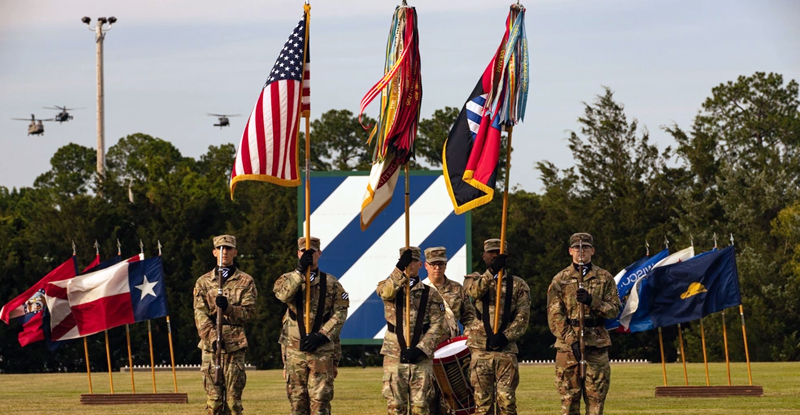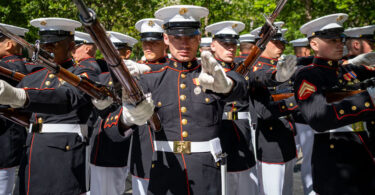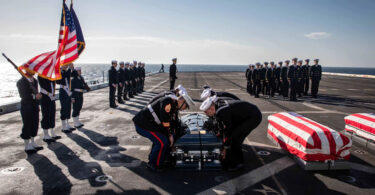By Maj. General Joe Arbuckle, US Army ret
STARRS Vice Chairman
Last week I attended a traditional Army Change of Command ceremony. It had a band, troops in formation, commander of troops with staff officers, and a color guard standing in front of the troops.
Being a member of the traditional five soldier color guard is an honor and it is also a physically demanding task, especially for the three members who hold the colors high at a position of attention for up to an hour with little movement.
There are three flag bears: the National colors, the Army flag, and the organizational flag.
With varying numbers but up to 190 campaign streamers on the Army flag, it is by far the heaviest of the flags and it requires a strong soldier to handle, especially when outside in a wind.
On the right and left flanks of the three flag bearers stands a soldier with a rifle, the least demanding job in the color guard. The color guard members at the ceremony was a mix of races with one female soldier.
30-40 minutes into the ceremony, the female soldier on the right flank fell out of formation and walked to the rear, apparently from a physical issue.
Becoming faint is a hazard in such formations and soldiers are drilled to not lock their knees, to wiggle toes, and slightly move the knees to keep blood flowing through the legs to help avoid fainting.
The Command Sergeants Major who stands behind the color guard and is responsible for selecting and training the members, immediately took the female soldier’s rifle and briefly stood in her place until he was relieved by a substitute color guard member.
Could falling out of the color guard happen to any soldier—Yes.
Does strength, endurance, and physical fitness matter in physically demanding tasks? Yes.
Should color guard members be selected based on their merit, strength, physical fitness, and endurance no matter their race and gender? Yes.
Was DEI involved in the selection of the color guard members to show a cross section of identities? Unknown; but in today’s politically correct toxic DEI environment, sadly we must wonder.








Color Guard composition from my experience has long been driven by DEI factors and not merit. It usually works out fine, it’s not a life or death event. This does however, “set the table” for other more critical decisions within on organization.